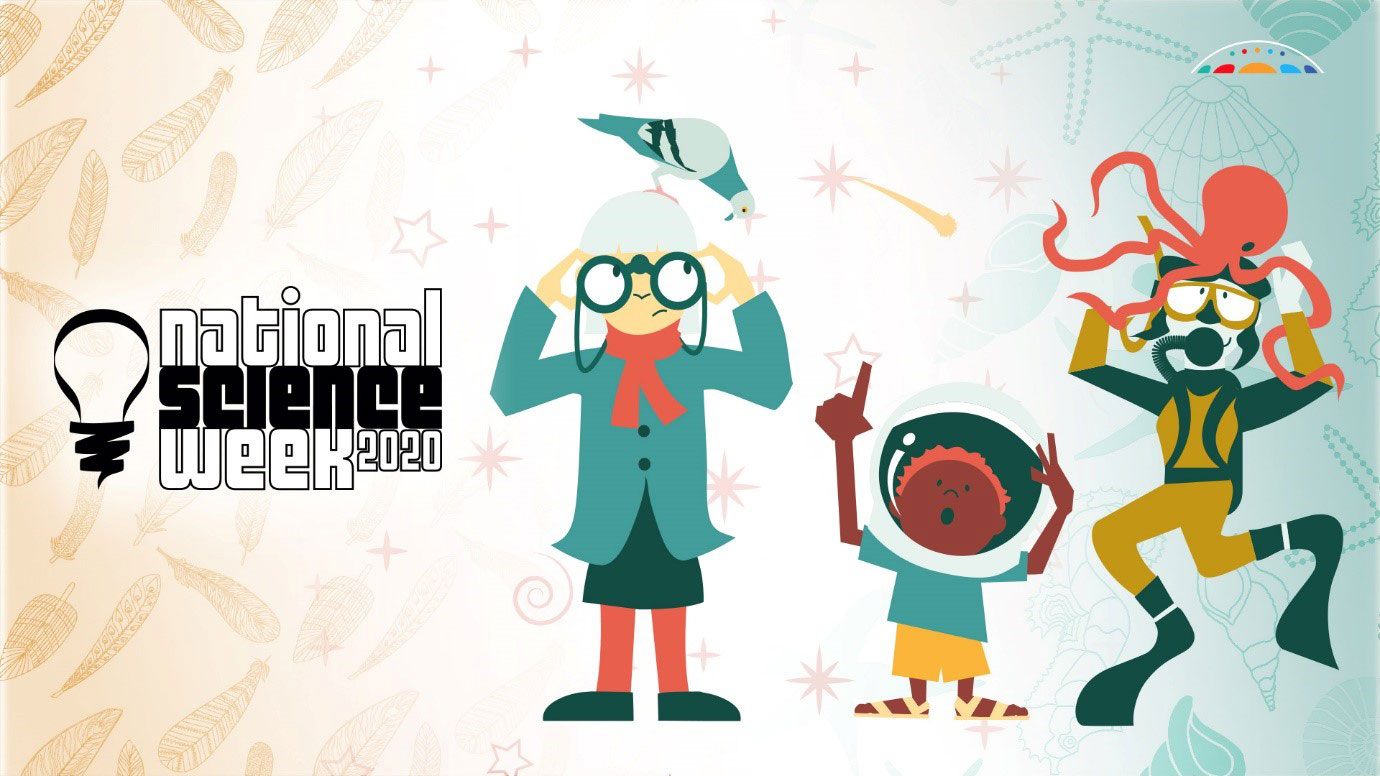

Who do you see when you look at this image above?
These Science Activity Characters show people engaging with a range of science-related activities. Last year, the Academy worked with the National Science Week team to share real stories of Australian science to bring these characters to life. For National Science Week this year there are three new stories to explore. What better time is there to celebrate the work of our Fellows?
There’s never a dull moment when you work as a marine biologist. You might come face-to-face with an octopus, a seal, a dolphin—or maybe a predatory sea star that can destroy our coral reefs. Professor Maria Byrne followed a lifelong passion for exploring the underwater world and applies her in-depth knowledge of sea stars to find better ways to manage crown-of-thorns starfish.
“I wanted to know what made animals tick, why animals are where they are in the world, and how did they get there?” said Professor Byrne.
What questions do you ask whenever you gaze up at the stars in the night sky? There aren’t too many questions more fundamental to our existence than ‘how did the Universe begin?’. Professor Rachel Webster explores how astrophysicists can get precious glimpses of our early Universe by peering around galaxies, inside black holes and back through time itself.
Professor Webster was inspired to delve a lot deeper into the Universe after “accidentally” attending a lecture on cosmology at the University of Sydney one summer, saying “it blew my 17-year-old brain out of the water.”
How do birds see the world—and how do we know? Understanding what a bird’s eye view really looks like helps us understand why different animals perceive the world in different ways. Professor John Endler specialises in understanding the visual systems of birds, and how some of them can even create visual illusions.
Professor Endler said his path to studying animal vision was initially triggered by “pure curiosity. I was curious about the why, rather than just the usual who, what, where and how. What are the animals trying to do, and why?”
You can also explore the ethics of artificial intelligence, how bees help us design better drones, and how virtual reality helps environmental conservation.
Share your own stories on social media with the #ScienceWeek, #SolveItWithSTEM and/or #STEMsavinglives hashtags and tell us how you use STEM to solve problems or who in STEM inspires you. Make sure to tag National Science Week (@Aus_ScienceWeek) and the Academy (@Science_Academy) so we can hear from you!
Find out more about the Academy's activities in National Science Week.
© 2026 Australian Academy of Science